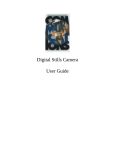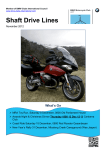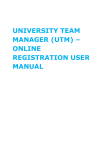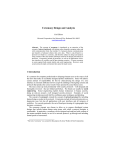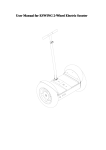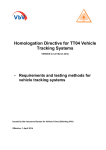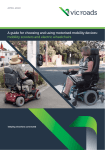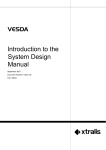Download Driving in the Snow in NSW
Transcript
Driving in the Snow in NSW (Excerpts from the NSW Dept. of Transport Centre for Road Safety) Driving in the snow can be challenging, especially if you are not used to the icy conditions. The following tips will help prepare you and your car for the trip. Before you go • Get a national park pass If you have a national park pass, you will be able to use the National Park pass holder lane on Kosciuszko Road at Sawpit Creek and Alpine Way Visitor Entry Stations. So get a pass before leaving home and look for the signs advising which lane to use for pass holder entry. Details on buying a pass are available via the following link: http://www.environment.nsw.gov.au/annualpass/DailyVehicleEntryFees.htm • Check access Kosciuszko Road between Perisher Blue and Charlotte Pass is routinely closed for the duration of the snow season to all vehicles except residents because of highly unpredictable weather conditions in this area. There is no overnight parking beyond Sawpit Creek. Have your vehicle checked Snowfield conditions may highlight any existing minor faults, particularly in the electrical system so it is essential to thoroughly check your vehicle before leaving home. Have your tyres, battery, brakes, cooling system, engine and windscreen inspected. • Add anti-freeze Add anti-freeze to your engine radiator. You'll need to match the amount of anti-freeze to the capacity of the coolant system. If this isn’t done and the coolant freezes, the engine block and radiator may crack, leaving you stranded with an expensive repair bill. Most modern cars use coolant with wide temperature capabilities, but you'll need to check with your service provider if special coolant is needed. • You should also add anti-freeze to your windscreen washing fluid to prevent it freezing on the windscreen when driving. • • Use cold-weather diesel Diesel ‘waxes’ at low temperature which blocks the fuel system and immobilises the vehicle. If you drive a diesel vehicle, ensure you use fuel formulated for use in cold conditions, such as ‘Alpine Diesel’. This is only usually available close to the snow fields, so plan your journey to arrive with plenty of room in your fuel tank for this fuel. Allow enough time for your trip Ensure you allow enough time for the trip. Weather can change quickly in mountainous areas, with a corresponding effect on the roads and travel speed. Also, if authorities declare a ‘snow chain day’, there can be delays in accessing snow chain bays to fit and remove chains, and the process itself can take a considerable amount of time. • Avoid travel fatigue Most people have to travel a considerable distance to get to the snow fields. Ensure you have regular breaks to ‘stop, revive and survive’. Even allowing for delays and distance to travel, driving to and from the snow fields can be more tiring than normal driving given the possible difficult conditions encountered – bad weather, darkness and narrow, winding roads. You are more likely to become tired because of the amount of activity you pack into a short period of time, especially at weekends. Be aware of the signs of travel fatigue and stop and rest as soon as you feel tired even if you have not scheduled a break. • Prepare for emergencies In case of an emergency carry a torch, blanket, dry clothes, tow rope, spade, wheel chocks and first aid kit. On the road • • • • • • • • Watch your speed Adjust your speed to the weather. Slow down when conditions deteriorate and proceed with caution, particularly in fog, snow or ice conditions. Operation Snowsafe The Police and transport authorities work together to conduct Operation Snowsafe. This operation targets speeding, drink driving and seatbelt offences committed by people travelling to and from the snow. Daytime running lights Ambient light in the mountains can be poor, especially in wintertime. You should drive with your headlights on low beam even during daytime to improve your visibility to other road users. Make sure you turn on your vehicle's fog or head lights when the weather turns bad. Take care overtaking Never overtake on a hill, at a bend or at intersections. Don't tailgate Braking distances in snow and ice are increased compared to dry conditions. Keep a safe distance from the vehicle in front. Brake and accelerate gently Braking should be gentle and early. When you accelerate, make sure you do it slowly. Obey traffic signs Signs are there for your safety and convenience. Always obey the speed limit and advisory signs, and take special notice of wildlife warning signs. Many road accidents which occur in the alpine areas involve native animals crossing roads, particularly at night. Be aware of variable message signs as these provide up-to-date information about the weather and road conditions and if snow chains have to be fitted. Snow poles and road edges Don’t drive if you can’t see the edge of the road or the next snow pole. These are painted orange and are tall enough for drivers to get their bearings in heavy snow. • Black ice Take particular care when driving at night or at dawn or dusk as surface moisture and dew freeze and may become black ice, which is very difficult to detect on the road. Indeed, black ice can remain in shaded or low-lying areas even during fine days. Snow chains Snow chains are recommended when driving in poor snow conditions to assist drivers and reduce accidents. • When driving in the Alpine Region, possible snow and ice risk sections are identified with yellow lane line marking and signposting. • National Park regulations state that all vehicles (except four wheel drive vehicles) entering the National Park must carry chains when driving through designated ‘snow and ice’ risk sections. Snow and ice risk sections are identified by black and yellow signs within the Kosciuszko National Park. The current designated ‘snow and ice’ risk sections are: • • • • • • • • • o Alpine Way – Thredbo to Tom Grogin o Kosciuszko Road within the National Park boundary o Guthega Road within the National Park boundary When directed by signs or an authorised officer, fit the chains to the vehicles driving wheels. Generally, this will be at special chain fitting bays along the route. Make sure you fit the chains to the driving wheels, which are the back wheels on rear wheel drive cars and front wheels on front wheel drive cars. If in doubt, check in the car user’s manual or your service provider. Make sure the chains you buy or hire are suitable for the wheel diameter and tyre size of your vehicle. If possible, practise fitting the chains in good conditions, so that you understand how to fit the chains and won't be placed in a difficult situation in bad weather conditions. To be effective, some part of the chain must be in contact with the road surface at all times. Some types of snow chains, such as certain ladder chains, should not be used as the spacing between the chain ‘rungs’ can be excessive and allow the bare tyre contact with the road surface. Tyre pressure should be 25 PSI or higher when using chains. Tyre manufactures recommend that cars with radial tyres shouldn't travel faster than 40 km/h when fitted with chains. Stop and check the tension of the chains after driving about 200 metres. Remove the chains immediately when you are told it's safe to do so. Random chain inspections will take place throughout the ski season and fines exceeding $300 will be issued to drivers who fail to comply with National Park regulations on the use of snow chains. Chain bays are located on Kosciuszko Road at: • o Sawpit Creek o Wilsons Valley o Dainers Gap o Prussian Creek Chain bays are located on the Alpine Way at: o Penderlea o Thredbo Diggings o Ranger Station 4WD vehicles • • • • Although excluded from the requirements to carry and fit chains, it is recommended that persons driving 4WD vehicles (which include off-road vehicles, all wheel drive vehicles and sports utilities), except those fitted with winter tyres, carry snow chains and fit them when directed. They will assist you in driving on ice and snow by improving your vehicle’s traction with the slippery road. You may also need them in the event of extreme weather conditions. If carrying snow chains, check in the vehicle’s user’s manual or with your service provider to which wheels they should be fitted. Winter tyres are specifically designed for driving on roads affected by snow or ice. They provide performance equivalent to snow chains on 4WD vehicles when driving on snow, and a better performance than standard tyres when driving on clear roads in cold conditions. Although they are sometimes known as ‘snow tyres’, they should not be confused with ‘snow and mud tyres’ that are commonly fitted to off-road vehicles. They can be identified by a standard logo showing a snow flake and a mountain (see right). As an alternative to snow chains, 4WD vehicles not fitted with winter tyres may be fitted with snow traction devices, such as items made from textiles, that comply with the Austrian Standard ONORM V5121.1. When you're there • • • Parking It is important to park only in designated parking areas and follow the directions of parking attendants. It may mean a slightly longer walk but it’s better than finding your car damaged at the end of the day by snow clearing vehicles. Don't apply the handbrake Moisture can freeze cables and brake linings. Instead, chock the wheels, but don’t use rocks as they may damage snow clearing machines. Leave the car in gear Leave the car in gear with the front wheels turned away from the slope. Remove wheel chocks from parking area when leaving. • • • • Apply your chains Even if chains were not required to enter the area, it may be advisable to fit them when parking. It is easier to do this early in the day rather than later when weather conditions may have changed. Clear ice from windows and mirrors Clear all glass and mirrors of ice before attempting to drive away from snowfields. Carry an ice-scraper to clear the bulk of the snow, ice and frost, and use the vehicle's heater and fan in conjunction with the air conditioner. Protect your windscreen wipers If you're parking for an extended period, lift wipers off your windscreen or place them in a plastic bag so they won't stick to the glass. Warm your engine Warm the engine for a few minutes before driving off. More information For more information on safe driving in snow, refer to Vehicle Standards Information 57 Driving in snow and ice conditions (PDF file size 161Kb).





